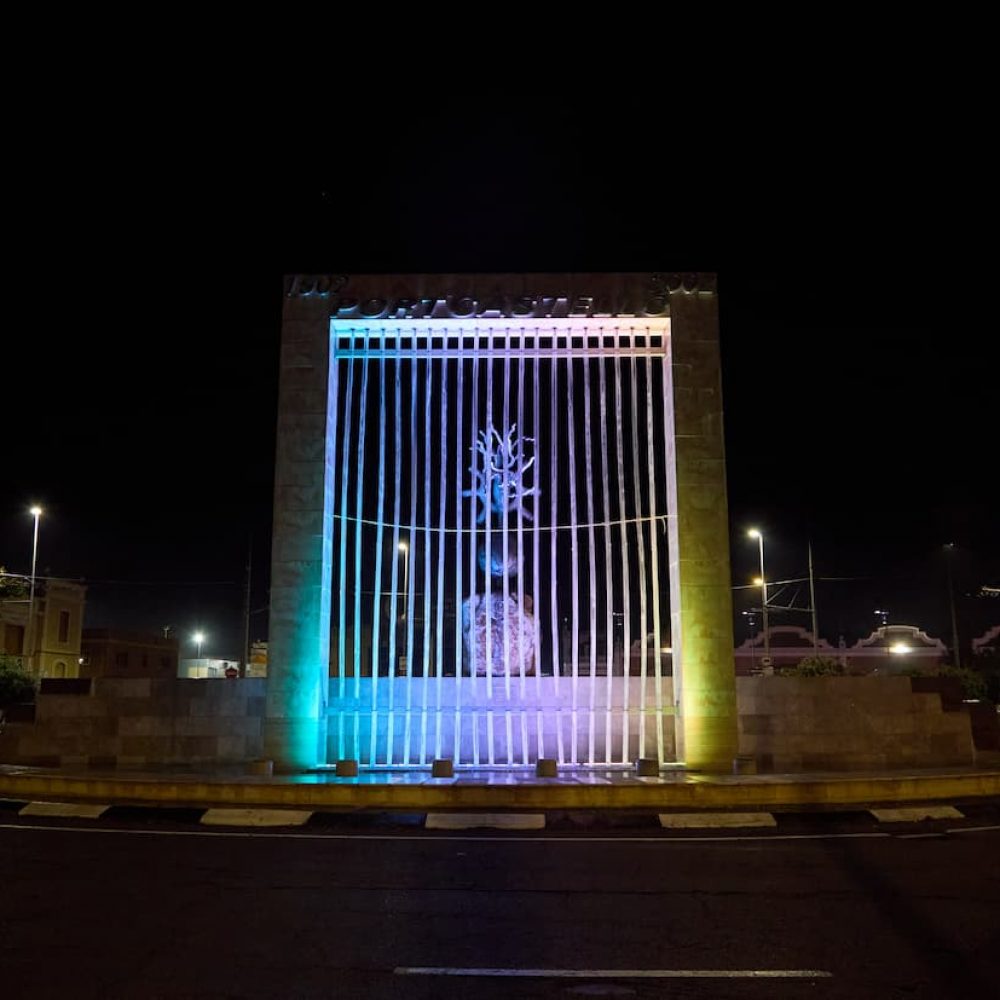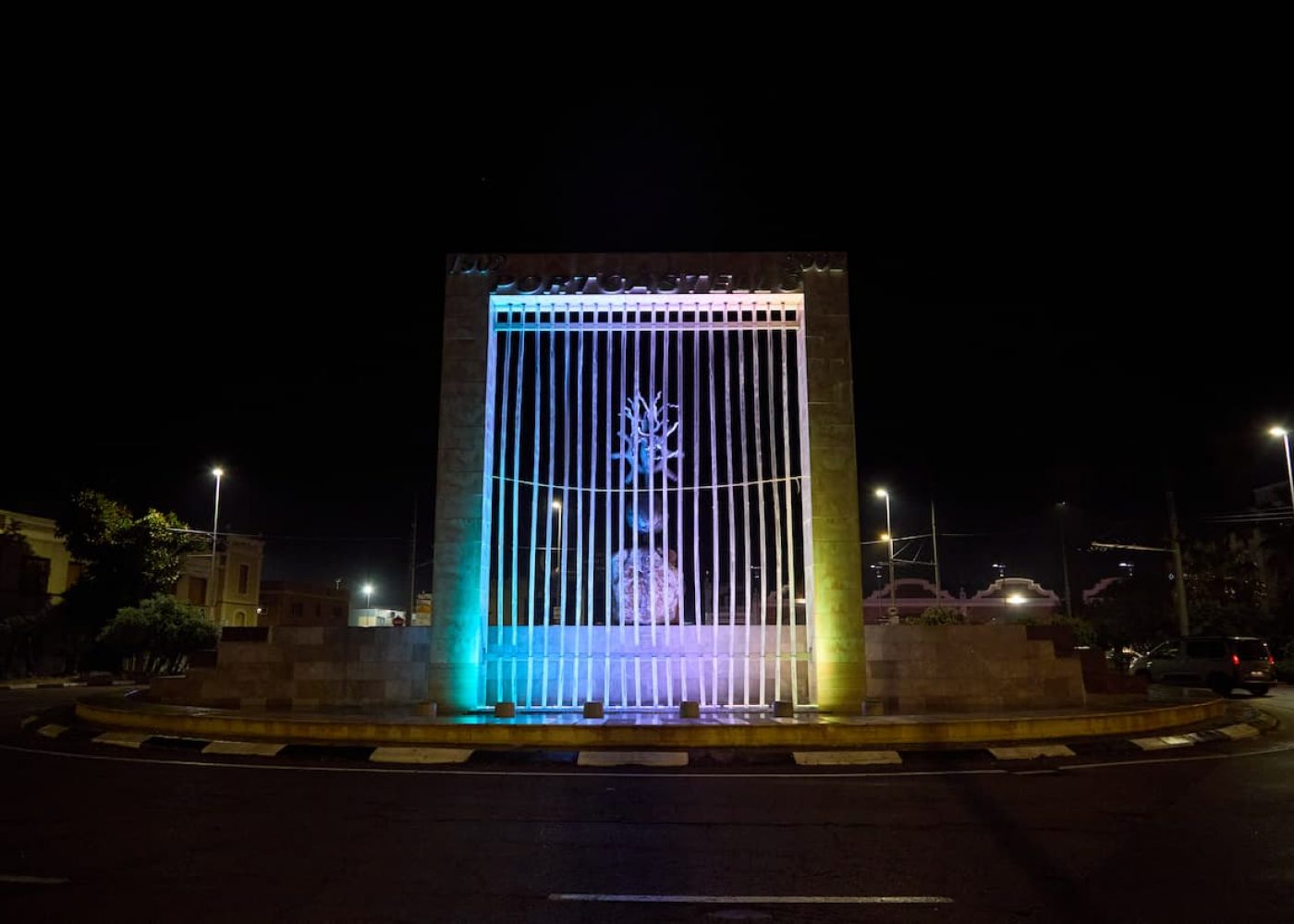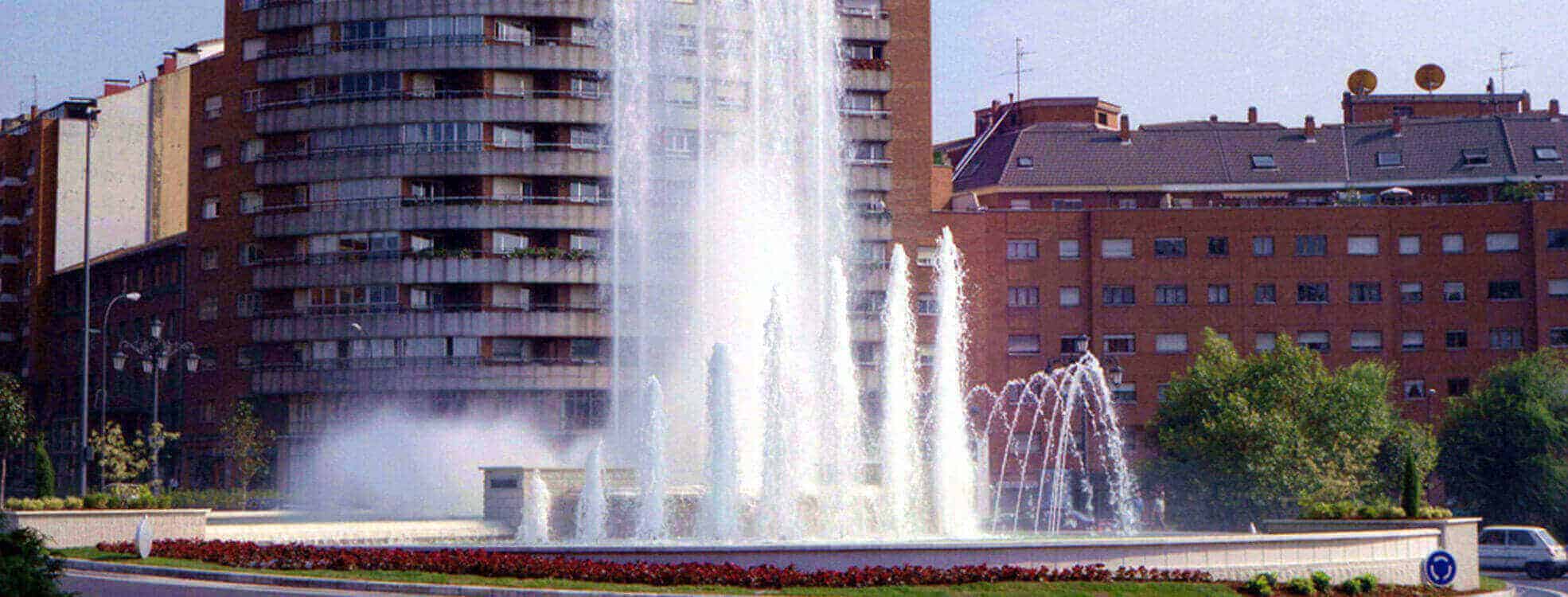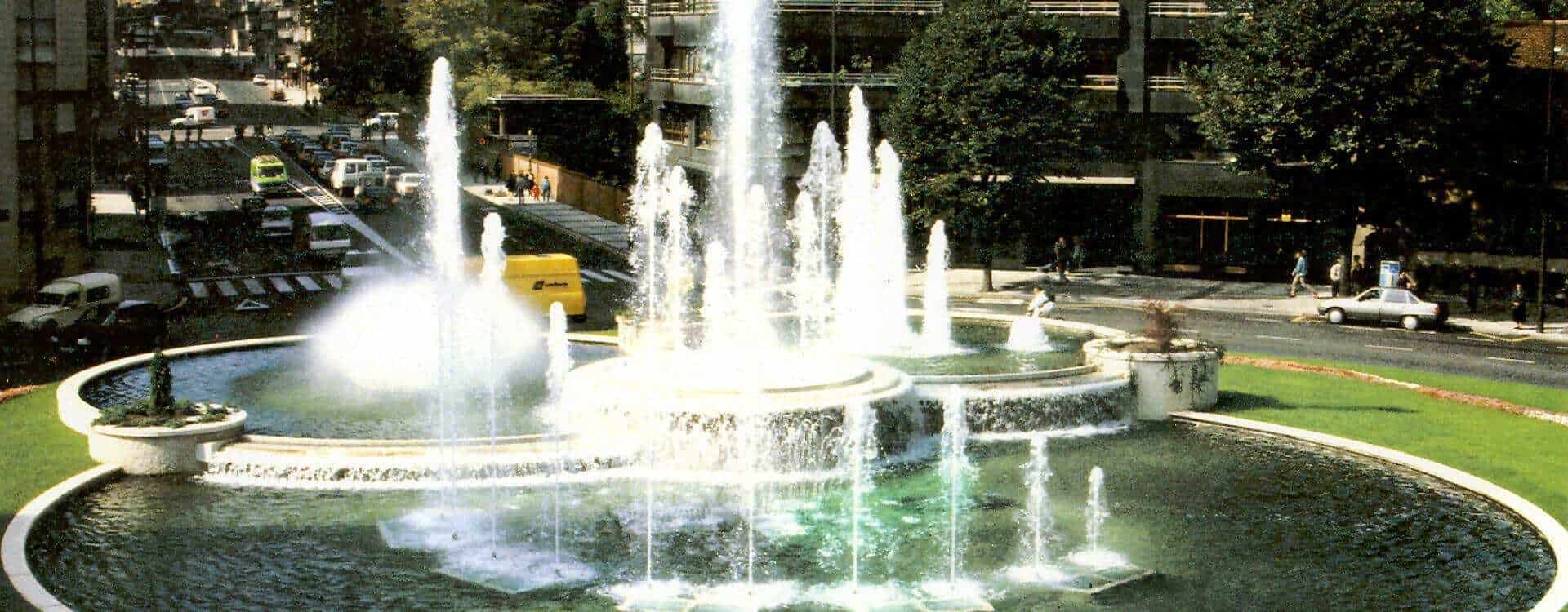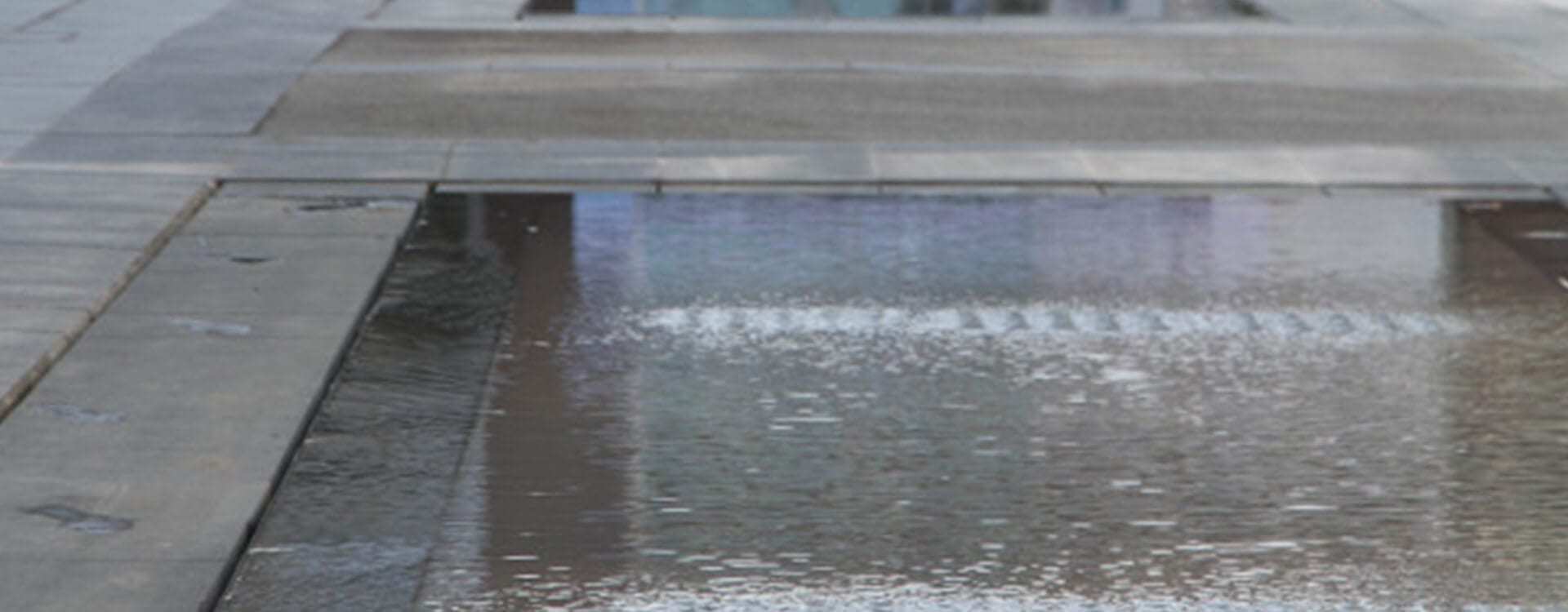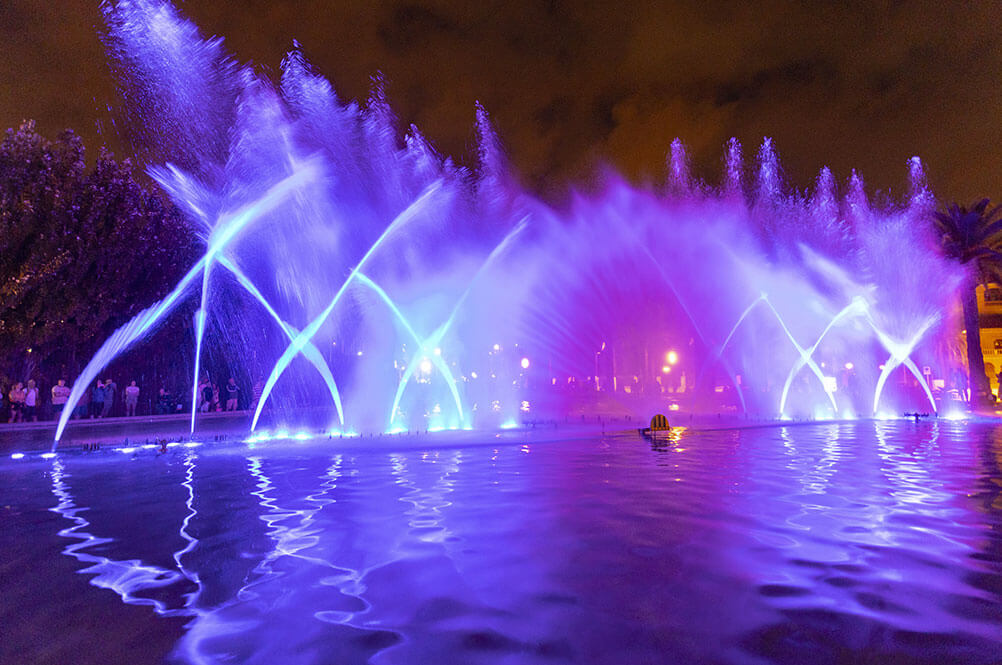Design
The renovation project aimed to restore and update the fountain without losing its original essence. To achieve this, extensive work was carried out on waterproofing the basin, ensuring the structure’s watertightness and preventing water loss.
The stone slabs forming the perimeter of the fountain were replaced and restored, with damaged ones being substituted to maintain the aesthetic harmony of the structure. Additionally, a thorough cleaning of all surfaces was performed to restore its original appearance.
One of the most innovative elements of the new design is the sculpture made of methacrylate tubes in wave shapes, which simulates the falling water and creates a visual effect that perfectly harmonizes with the maritime environment. To enhance this effect, an RGB LED lighting system has been integrated, allowing color changes and the creation of different lighting scenes, adding dynamism and modernity to the fountain.
Execution
The renovation of the fountain was carried out in several phases:
Phase 1: Structural repair and basin preparation
Waterproofing and painting work was performed on the basin, ensuring the durability of the coating and preventing leaks. The wooden walkway was also restored, preserving its original design while reinforcing its structure to guarantee visitor safety.
Phase 2: Hydraulic and electrical installations
The entire hydraulic system was renovated, with new pipes installed and water flow optimized for efficient and sustainable operation. At the same time, the electrical system was modernized by integrating programmable RGB LED lights, enabling synchronized light and color shows.
Phase 3: Sculpture installation and commissioning
The methacrylate tube sculpture was installed with precision to ensure its stability and proper integration with the water flow. Finally, functional tests were conducted, adjusting the water and light effects to achieve a spectacular result.
Sustainability
Following the sustainability principles that define OTB projects, the fountain renovation was carried out using high-durability and energy-efficient materials. The LED lighting system significantly reduces electricity consumption compared to previous technologies, while the optimized hydraulic system minimizes water waste through an efficient recirculation cycle.
Additionally, the restoration of existing materials and the rehabilitation of the original structure have helped reduce the need for new resources, ensuring an environmentally responsible intervention.

